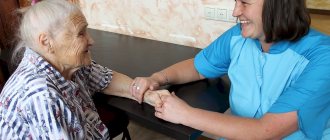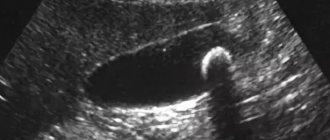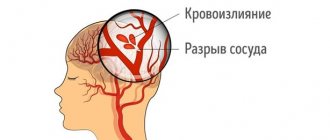“Angel child” is what children are sometimes called when they have been given a terrible diagnosis that sounds like a death sentence - cerebral palsy. Cerebral palsy. Yes, these kids will never become like their peers. They will not happily jump through puddles, rush headlong on a bicycle and ask endless “why?” But this will not make them less dear and beloved to their parents! What could be more terrible for them than the suffering of their little blood? But you can’t give up and fall into despondency and depression! After all, it depends on the parents and loved ones how much such a child can adapt to life in society and how successful the child’s development will be - physical and mental. Only through the efforts of loved ones will there be hope for reducing pain and developing motor functions. And to fight the enemy, you need to know him by sight.
So, what is “cerebral palsy”? Why “children’s” - after all, adults also suffer from it? What types of cerebral palsy can there be? How common is this diagnosis? What are the causes of cerebral palsy and its consequences? Is it possible to prevent the occurrence of cerebral palsy? Is cerebral palsy inherited? Is it possible to become infected with this disease? What should you pay attention to so as not to miss the first manifestations of cerebral palsy?
Which children are at risk? And, of course, the questions that most concern parents are: is cerebral palsy curable and what can be done to help a sick child and alleviate his condition? You will learn about all this by reading the article. And, most importantly, you will understand in which direction you need to move and what to do so that the child begins to crawl, walk, hear you and speak. Indeed, even in the most severe cases, progress in sensory and motor functions is possible, which significantly improves the child’s development and quality of life.
The term cerebral palsy is used to describe a group of chronic conditions that affect motor and muscle activity with impaired coordination of movements.
The cause of cerebral palsy is damage to one or more parts of the brain either during fetal development, or during (or immediately after) childbirth, or during infancy/infancy. This usually occurs during a complicated pregnancy, which is a harbinger of premature birth.
The word “cerebral” means “cerebral” (from the Latin word “cerebrum” - “brain”), and the word “paralysis” (from the Greek “paralysis” - “relaxation”) defines insufficient (low) physical activity. Cerebral palsy itself does not progress, because... does not give relapses. However, during the course of treatment, the patient’s condition may improve, worsen, or remain unchanged.
Cerebral palsy is not a hereditary disease . They can never become infected or get sick. Although cerebral palsy cannot be cured (it is not “curable” in the generally accepted sense), constant training and therapy can lead to improvement of the condition.
Story
In 1860 English surgeon William Little first published the results of his observations of children who, after suffering a birth injury, developed paralysis of the limbs. The children's condition did not improve or worsen as they grew: problems with the grasping reflex, crawling and walking remained. Signs of such lesions in children have long been called “Little’s disease”; they are now known as “spastic diplegia”. Little suggested that these lesions were caused by oxygen deprivation (hypoxia) during childbirth. However, in 1897, the famous psychiatrist Sigmund Freud, noting that children with cerebral palsy often suffered from mental retardation, visual perception disorders and epileptic-type seizures, suggested that the cause of such deeper brain lesions was rooted in the pathology of the infant’s brain development at an earlier age. period of life - during the period of fetal development in the womb.
Despite this assumption by Freud, until the 1960s of this century, it was widely believed among doctors and scientists that the main cause of cerebral palsy was complications during childbirth. But in 1980, after analyzing data from national studies of more than 35,000 cases of newborns with signs of cerebral palsy, scientists were amazed that complications due to birth trauma were less than 10%. In most cases, the causes of cerebral palsy have not been identified. And from then on, extensive research began on the perinatal period of life: from the 28th week of intrauterine life of the fetus to the 7th day of the newborn’s life.
Consequences of cerebral palsy
Characteristic features of cerebral palsy are disturbances in motor activity, the muscular sphere is especially affected - there is a lack of coordination of movements. Depending on the extent and location of areas of brain damage, one or more forms of muscle pathology may occur^
- muscle tension or spasticity;
- involuntary movements;
- disturbance of gait and degree of mobility.
The following pathological phenomena may also occur:
- abnormality of sensation and perception;
- decreased vision, hearing and speech impairment;
- epilepsy;
- impaired mental function.
Other problems include difficulty eating, decreased urinary and bowel control, breathing problems due to poor posture, bedsores and learning difficulties.
How dangerous is cerebral palsy?
The severity of the disease depends on the degree of brain damage; this condition is determined by the signs of cerebral palsy during pregnancy. A woman needs to regularly attend a consultation, undergo examinations and undergo tests. If you create comfortable conditions for bearing a child, the birth will take place without complications.
Mild and moderate severity of paralysis can be successfully treated, in some cases there are no residual signs of pathology. Here, success largely depends on a responsible approach to rehabilitation of both the doctor and the parents themselves.
Causes of cerebral palsy
Cerebral palsy can be caused by most factors that impair brain development. The main reason is insufficient oxygen supply to the brain - hypoxia (intrauterine or in a newborn). The supply of oxygen can be interrupted by premature separation of the placenta from the walls of the uterus, malpresentation of the fetus, prolonged or rapid labor, and impaired circulation in the umbilical cord.
Premature birth, prematurity, low birth weight, RH factor or group incompatibility of the blood of the fetus and mother according to the A-B-O system, infection of the mother with rubella measles or other viral diseases during early pregnancy - and microorganisms attack the central nervous system of the fetus - all these are also risk factors.
In the USA, in particular, all research is aimed at studying the two main causes of cerebral palsy: rubella measles and incompatibility of the blood of the fetus and mother.
So, the main causes of cerebral palsy are associated with the development of pregnancy and childbirth , and these conditions are not inherited: and such paralysis is often called congenital cerebral palsy (associated with intrauterine pathology or the process of childbirth). A less common type is acquired cerebral palsy , usually developing before the age of two (traumatic brain injuries due to accidents or brain infections).
Why does it occur
There are several versions that cause such a terrible disease in children. Below we will look at each of the reasons.
Hypoxia
Some areas of the baby's brain may suffer from a lack of oxygen. This happens with various complications, which include circulatory disorders, changes in the umbilical cord, fetoplacental insufficiency and other pathologies.
Hypoxia causes damage to the nervous system of the unborn child, and reflexes are formed incorrectly. The baby cannot keep his balance. The muscles are unbalanced, motor activity is impaired.
Injuries
In case of difficult childbirth, injuries are also possible. They occur during rapid labor or, on the contrary, during prolonged labor. If labor is sluggish, then serious problems can also arise.
Fetal pathologies
The baby may lie feet first, making it difficult for him to pass through the birth canal normally.
Oligohydramnios, high fetal weight, as well as prematurity are factors due to which, in the future, the child’s health is at risk.
Diseases and characteristics of women
When giving birth to a child after the age of 30-35, a woman is at risk. But things don't always end in problems. Patients in the older age group are more likely than others to ask the question whether cerebral palsy can be determined during pregnancy by ultrasound.
A narrow pelvis, small size of the uterus and childbirth later than the specified date lead to complications. This also includes toxicosis in the later stages.
Chronic diseases of a woman also affect possible abnormalities in the child. We are talking about hypertension, obesity, endocrine and cardiovascular pathologies. Taking medications always affects the child’s health.
An unhealthy lifestyle increases the risk of having a sick baby. These include trauma, emotional overload, drug, nicotine and alcohol addiction.
Premature birth
The lower the child’s weight after birth, the more abnormalities are detected. Everything is connected with the immaturity of organs and systems; they cannot cope with their work. Modern medicine is on guard for such cases, so there is no reason to worry ahead of schedule.
Types of Cerebral Palsy
There are three main types of cerebral palsy:
- Spastic - the patient has great stiffness and difficulty moving: 70-80% of patients;
- Athetoid (athetoid), or dyskinetic - the presence of involuntary, uncontrolled movements (hyperkinesis): 10-20% of patients;
- Ataxic (ataxic) - imbalance, the presence of deep-seated mental deviations: 5-10% of patients.
A mixed type (from the above) is possible. There are other types of cerebral palsy, although they are rare.
Cardiotocography
Using this method, you can determine the presence of hypoxia - poor blood circulation in the fetus. Its presence puts mother and child at risk for cerebral palsy.
Algorithm for the procedure:
- the woman lies on her left side, a cushion is placed under her waist;
- two sensors are attached to the abdomen to read the baby’s heart rate and uterine contractions;
- after 20-60 minutes, the doctor draws conclusions about the presence of fetal hypoxia.
Can cerebral palsy be prevented?
Yes. Currently, the chances that make it possible to prevent the occurrence of cerebral palsy have increased: testing and monitoring the health of the mother during pregnancy. First of all, the definition of the RH factor. If Rh is negative, immunization must be carried out within 72 hours after birth (or at the end of pregnancy), which will prevent the adverse consequences of blood incompatibility in a subsequent pregnancy. If the woman has not been immunized, the consequences of blood incompatibility in the newborn can be prevented by an exchange transfusion of blood in the child.
If a newborn is diagnosed with jaundice, he is subjected to light therapy in the infant feeding department. There are other methods to prevent premature birth. These measures reduce the likelihood of viral diseases and other viral infections in pregnant women. The birth of sick children is greatly influenced by increased radiation and the use of drugs and other medications by pregnant women.
To prevent the possible birth of a sick child, it is necessary to monitor patients with diabetes mellitus, anemia (anemia), and control over the rational nutrition of pregnant women. Great importance should be given to creating favorable conditions for the birth of a healthy child. The assistance of highly qualified specialists in the prenatal period is necessary, and newborns should also be protected from accidents and injuries.
“I’ll pay any money, just get me back on my feet!”
- Mom comes from afar. The child is 8 years old and is bedridden. Mom is ready to pay money to any private structures that convince her: “Just give us two or three years, and the child will definitely walk on his own.” And the mother, clutching at this straw, blindly believes in these promises and puts the entire family fortune on the line, sells the apartment and car, anything, takes out loans, they go to these centers and get treatment, but in the end they don’t receive nothing, because there is no way to bypass the patterns of movement.
They come to us, and the mother says: “Teach your child to at least sit.” But if he has level V of global motor functions (the most severe), even this cannot be promised. The only thing that can help is to improve head control, maybe improve hand grip, and increase some of the child’s communicative functions. In such a child, it is necessary to deal with secondary orthopedic problems (scoliosis, hip dislocation, contractures).
When we talk about palliative children, we must understand that the main principle of rehabilitation for them is to feed them, so that they do not starve, so that they gain normal weight, and give the correct position to the body during the day in order to prevent the formation of secondary complications. All rehabilitation should consist of only this.
Forms of cerebral palsy, depending on the affected areas of the brain. Photo neurodoc.ru
The main thing we recommend for such a child is to relieve pain, relieve spasticity, we recommend good technical means and advise good nutrition for the child (in severe cerebral palsy this is a problem). You know, the situation changes immediately in the family, because the child’s mood improves, he stops getting sick, he is fed, he stops breaking down, because we are preventing the usual pathological fractures. And the mother no longer wants to move around the country and the world in search of magical rehabilitation, because she sees a normal, good quality of life for the child.
We try to talk about this classification system with parents, we have schools for parents where we explain it in great detail. Of course, not everyone wants to accept this information, because somewhere inside every parent there is a glimmer of hope that the child will go. And when we determine the level of motor development, and the mother understands what we are talking about, not everyone can immediately accept this information. But they still agree. At the very least, we have clearly reasoned, definite words about what is indicated for this child and what can prevent complications that can lead to suffering and death of the child.
– The question that any mother who has learned about the diagnosis of cerebral palsy in her child probably asks you: can it be cured?
– This is an incurable disease. If you dig deeper, where does cerebral palsy even come from? This is a violation of motion control, primarily a violation of the anti-gravity system. We, living on planet Earth, cannot live without this system. We resist the forces of gravity. There are entire floors in our brain that help us fight the forces of gravity. These are the midbrain, subcortical nuclei, cerebellum, cortex. If all this is intact, then the connections work well, then we are fighting well against the forces of gravity, everything is normal. But as soon as some damage to the brain structures occurs - due to hypoxia, infection, etc., destruction mechanisms can start.
A premature baby developed leukomalacia of the brain, that is, destruction of the brain around the ventricles - this is the white matter, the part of the brain where the paths go, for example, from the cerebral cortex to motor neurons, muscles, and if this path is atrophied, destroyed or even partially collapsed, then high-quality performance of this function can no longer be achieved. That is, cerebral palsy is not a muscle problem, it is a brain problem. If we see serious structural damage in the brain, the first thing that will suffer is the quality of movement.
Can cerebral palsy be cured?
In this case, it is better to talk about “care” or “caring attitude” towards a disabled person, “the ability to provide assistance”, than about “treatment”; this means creating conditions for the child to maximize his potential as he grows and develops. And you need to start as early as possible - with early diagnosis of a baby with signs of developmental delay (or disorder), because Identifying the disease early in life can improve the child’s health. Recovery programs should begin as early as possible.
Such programs include various activities for the child^
- his training;
- speech and hearing development classes;
- conducting classes aimed at the child’s social adaptation;
- classes on the development of the emotional sphere.
Such “management” programs should include monitoring the child’s movements, learning, speech, hearing, social and emotional development. Through various programs, physical therapists, therapists, teachers, nurses, social workers and other professionals help both the family and the child. (Using appropriate medications, surgery, orthopedic devices, etc., to improve neuromuscular coordination and eliminate or prevent dysfunction).
When people with disabilities become adults, they need support from services such as:
- personal assistance service,
- long-term therapy
- vocational and special training,
- independent living services,
- consulting,
- transportation,
- implementation of leisure and recreation programs,
- employment services - everything you need for development.
People with cerebral palsy can go to school, have a job, get married, support a family, and live in their own home. Most people with cerebral palsy need help to first gain independence and the opportunity to take an active part in society.
How many people have cerebral palsy?
Some statistics:
Cerebral palsy is the most common cause of childhood disability, among which the first place is diseases of the nervous system. Cerebral palsy is the second most common neurological disorder in childhood; The first is mental retardation in children. In third place are congenital anomalies.
Latest publications in an international scientific research journal:
Evolutionary medicine and child neurology and the Research Foundation of Cerebral Palsy Associations (UCPA, USA) provide insight into the statistics of the birth of children suffering from cerebral palsy.
Among children with normal birth weight who become disabled due to cerebral palsy:
- approximately 70% became disabled due to factors that occurred before birth (prenatal period),
- about 20% - due to factors that appeared either during childbirth (perinatal period) or immediately after birth (the first four weeks of life),
- 10% - due to factors that appeared during the first two years of life (postnatal period)
Among low birth weight (or premature) children in whom cerebral palsy is the cause of disability: the incidence is approximately 0.7 per 1000 live births;
There is still no certainty as to when the brain damage occurred:
- did cerebral lesions occur during embryonic development?
- or due to the use of neonatological techniques for preserving the baby?
- Have cerebral lesions occurred during or after birth in infants with “vulnerable” (“easily injured”) brains?
According to the Research Foundation of Cerebral Palsy Associations (UCPA), there are approximately 550,000 people with the disease in the United States and 9,750 children and newborns are diagnosed with the disease each year. Of these, 1.2-1.5 thousand are preschool children. The number of births of patients with signs of cerebral palsy in the United States has increased by 25% over ten years: from 1.5 to 1.8. per 1000 babies born alive in 1990. up to 2.0 - 2.5 infants with this pathology in 2000. Currently in the United States there are from 550 to 760 thousand disabled people with cerebral palsy, which is 2.8 people per 1000 population.
In Moscow, according to Professor E.G. Sologubov, there is an increase in the incidence of cerebral palsy: over 20 years (from 1967 to 1987), the number of births per 1000 children increased from 1.71 to 1.88 in 1992 in Russia there were 62 thousand, and in the territory of the former USSR - 122 thousand patients with Cerebral palsy (patients under 15 years of age were taken into account). the frequency of occurrence in 2001 was (according to various sources) 5.0-6.0 per 1000 newborns
It should be noted that statistical data on the number of patients with cerebral palsy in the USSR were not available, and even the few statistical data tended to be underestimated.
In Moscow there are approximately 10 thousand disabled people with consequences of cerebral palsy, half of them are children. In the Moscow region - about 5 thousand people. Based on the frequency of births of children with signs of cerebral palsy (5.0-6.0 per 1000), it can be assumed that there are at least 1.5 million such disabled people in Russia. There are no exact data on the number of disabled people with consequences of cerebral palsy in Russia.
In terms of severity, one of the most common lesions now associated with new views of cerebral palsy is spasticity of one or more limbs.
It turns out that muscle spasticity of the limbs at the birth of a normal-weight baby is caused by lesions that dominate the prenatal period; and at the birth of premature babies and children with low weight, spasticity of the limbs is caused by lesions that dominate in the perinatal (from the 28th week of intrauterine life of the fetus to the 7th day of the newborn’s life) and neonatal periods of the newborn.
Comments
This study is confirmed by similar data in the USA, Germany, and Russia. It is clear that special attention needs to be paid to when brain damage occurs, what are the risk factors that put the infant's health at risk, and what are the most common consequences of cerebral palsy. As the likelihood of cerebral disorders increases due to the increasing number of surviving premature infants, studying the causes of low birth weight and premature birth is becoming a priority in research.
Ultrasound
Ultrasound is the “gold standard” in the diagnosis of many diseases that can be detected during intratubal development. The images show any structural changes in organs and tissues, which can be used to make an accurate diagnosis.
In diagnosing cerebral palsy, ultrasound is informative only in cases of large damage to brain tissue. Minor pathological areas are difficult to identify using this method.
Cerebral palsy - how to deal with it?
This disease can occur for various reasons, the main one being maternal diseases, for example, diabetes mellitus, heart defects, endocrine system defects - hyperthyroidism, hyperandrogenism. Throughout their pregnancy, which is often pathological or premature, such women “sit” on hormones.
By the way, prematurity is also a risk factor. Cerebral palsy is very common in twins, with one baby being born healthy, and the other developing cerebral palsy over time. The cause of the development of this disease can also be abortions in the mother, which lead to low placentation (fixation of the placenta) and, as a consequence, chronic intrauterine hypoxia of the fetus. Sometimes a pregnant woman’s too young or, conversely, too mature age plays a role.
with toxoplasmosis, enterovirus infection, hepatitis, herpes, cytomegalovirus, chlamydia, etc. during pregnancy.
As you know, child development has its own norms:
- at 3 months the baby should be able to hold his head up,
- at 4-5 months - roll over from back to stomach and back,
- at 6 months - sit down,
- at 8-9 months (but no later than one year and three months) - walk with a support,
- per year - speak 8-10 words (“mom”, “dad”),
- at one and a half years - speak 20-30 words,
- at two years old phrasal speech (“Mama give”) should appear.
- Mom should worry if the child “does not reach” the norm. Any delay in motor development is also a risk factor for developing the disease.
The diagnosis of cerebral palsy is not always made immediately after birth . The disease can occur under different “masks” - syndromes of muscle hypertonicity, dystonia, hypotension, and increased neuro-reflex excitability. Children with such diseases need regular medical examinations, both from an orthopedist and a speech therapist. Cerebral palsy must be treated at the moment the pathology forms. And, most importantly, don’t miss it.
The main methods of treating cerebral palsy are physical therapy, medications and massage. It is advisable to have the massage done by a specialist. Parents themselves should not do this. The procedure scheme is selected individually. At the same time, they try to restore the balance between the muscles - flexors and extensors, inconsistency in the work of which leads to delayed development and incorrect postures.
It is advisable to start massage no earlier than 1.5 months, since at an earlier age the cause of the pathology is not entirely clear.
There are many types of massage: classical, segmental, acupressure, according to Manakov, cryomassage.
The treatment complex also includes running on a treadmill with a mirror hanging in front of it, which allows the child to see himself and correct his movements. Kids ride on a special bicycle, with their arms, legs and back fixed. For those who move poorly, there are special walkers. And trampolines help develop the vestibular apparatus.
Such children enjoy splashing in the pool. This procedure is called balneotherapy. In water, their body weight changes, and they are not afraid to take a step. Paradoxically, some babies first learn to swim and then walk. Those who cannot walk yet get into the pool using a lift. Bathing is complemented by a very effective and pleasant hydromassage.
Many children suffering from cerebral palsy are prescribed mud therapy. Dirt has a general reflex chemical effect and stimulates nerve endings. Warm mud is a good remedy for hypertension. Electrophoresis helps relieve muscle spasticity (tension) in cerebral palsy, and magnetic therapy is used to improve vascular regulation. An integral part of treatment is physiotherapy and paraffin therapy.
And now - a very important detail that parents should definitely know about. A child with cerebral palsy needs to be shown to a speech therapist. Delayed motor development is often accompanied by a slowdown in mental and speech development. With hypertonicity, even the baby’s tongue is in good shape. This prevents the child from speaking, so speech therapy massage and a course of drug therapy may be required.
The course of treatment is carried out every six months and lasts on average 35-40 sessions.
Since cerebral palsy is a neurological pathology, it is also treated with nootropic drugs that stimulate mental activity, which are prescribed by the attending physician.
One of the syndromes of cerebral palsy is increased intracranial pressure, which can be reduced by massage, magnetic therapy and electrophoresis. To improve blood flow, the doctor prescribes special vascular medications.
If cerebral palsy is not treated in time, in addition to muscle deformation, orthopedic deformation may appear - kyphosis and kyphoscoliosis of the spine, hip dysplasia, flat feet. When treating such diseases, it is necessary to apply orthopedic splints and spacers, wear orthopedic splints and splints, and be sure to wear orthopedic shoes. A reclinator is used to straighten the spine. With dysplasia, dislocations and subluxations often occur, which requires surgical intervention. Surgery is also necessary for persistent orthopedic deformities.
Is it visible on ultrasound?
It is impossible to reliably determine cerebral palsy using ultrasound during pregnancy. Only the combination of all the above factors allows us to assume possible violations.
Note that this also includes Rh conflict. Against this background, hemolytic disease may develop. And then severe jaundice occurs. The baby is vomiting, may have convulsions, and his general condition is impaired. The sucking reflex is not developed. As a result, the nervous system suffers, which will adversely affect the further development of the child.
Now you know whether it is possible to determine cerebral palsy during pregnancy by ultrasound. No one will give an exact guarantee. The pathology may not be noticed. In addition, heredity is important. And the above factors are just a part. In fact, there are many more of them. Conventionally, the reasons can be divided into two groups - postpartum and birth.
The diagnosis of cerebral palsy is not made during pregnancy, but after childbirth some time later. Usually by two years it becomes clear. But even earlier, parents will see that something is wrong with the child. He will be developmentally delayed. If the impairments are severe, the child will not be able to sit or walk, which will certainly become noticeable before two years of age.










